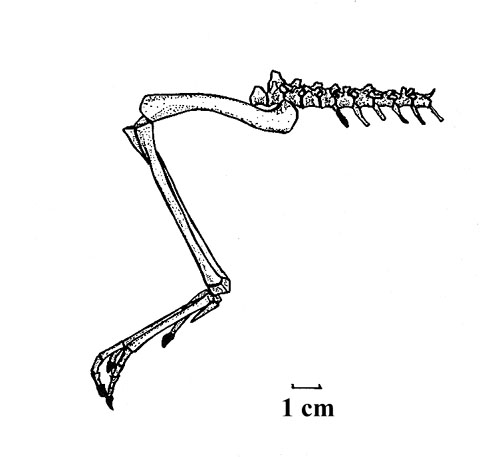
Species: lilloensis (ROMER, 1972) SERENO & ARCUCCI, 1994
Etymology: In reference to the Instituto Lillo, Tucuman, Argentina.
= Lagosuchus lilloensis ROMER, 1972
Holotype: PVL 3872
Locality: Southwest part of the Los Chanares Locality, “area de Los Chanares, 2 km al SE de la Puerta de Talampaya.”, more accurately located 3 km north of the north branch of Chanares River and 5 km southwest of the Puerta de Talampaya, Talampaya National Park, Chanares beds, Province of La Rioja, Argentina.
Horizon: Lower member of the Chanares Formation.
Biostratigraphy:
Age: Ladinian Stage, Upper Mid Triassic Epoch, Late Triassic.
Material: Back of skull, complete left leg except for phalanges, complete right leg, a series of vertebrae including sacrum and caudal vertebrae.

Referred material:
PVL 4670 Articulated anterior caudal vertebrae lacking chevrons.
PVL 4671: Articulated anterior caudal vertebrae with chevrons.
PVL 4672: Articulated vertebral colum from atlas to the 17th presacral vertebra.
= Lagosuchus talampayensis BONAPARTE, 1975
PVL 3870: Very back of skull, posterior part of premaxilla, maxilla, 9 cervicals, 11 dorsal vertebrae, ilia, pubi, ischia, femur, tibia, fibula, metatarsals, phalanges.
PVL 3871: Scapula and coracoid, humerus, ulna radius, femur.
PVL 3872: Partial braincse and articulated vertebral column form the atlas to the ninth presacral vertebrae.